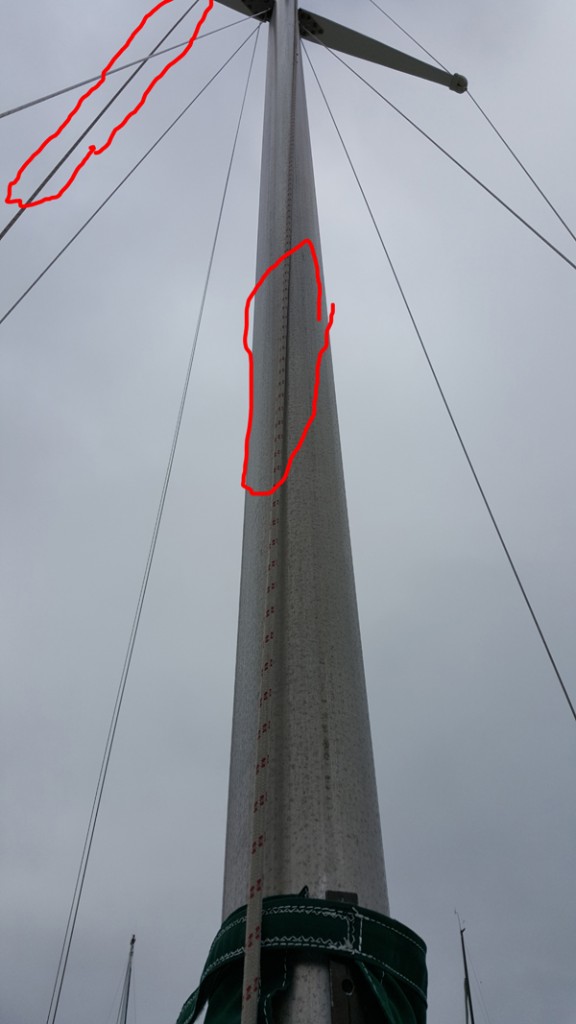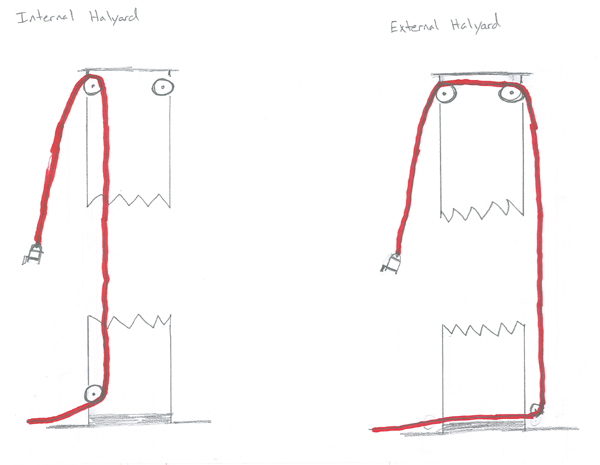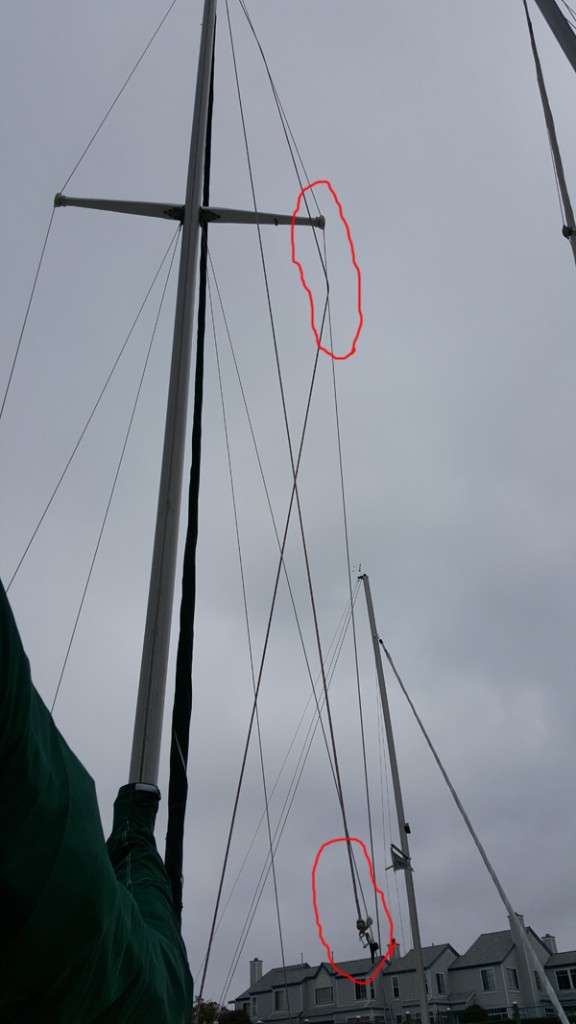No, I’m not cursing at you, although it is one of my personal pet-peeves!
Here it is from Merriam-Webster:
verb \ˈfrap\
frapped frap·ping
Definition of FRAP
transitive verb
I’m not sure why they say “<frap a sail>” – I’ve never heard it used in that way. A common use around here is, “Frap your halyards!”
This morning as I was headed down to the docks to make a couple of pre-Saturday repairs, I was met by a friend, who is also a live-aboard (lives on his boat). His complaint to me was that it was very hard to sleep the night before because of all of the banging halyards! This prompted a walk-around of the Tradewinds Fleet and 3 emails to members about frapping halyards this morning!
This one should have been an easy one – there is only one half of the halyard outside the mast, the other half is internal. It is simply a matter of loosening it, flipping it around the spreaders, and tightening it up.
Here’s an example of a little tougher one to remember (excuse my crayon drawings!):
In this case, the SIQ (sailor in question) remembered to clip the end of the halyard that connects to the head of the sail away from the mast, but forgot the other half! This is an external halyard. Both halves of the halyard are on the outside of the mast. This must be loosened, the shackle end clipped away from the mast, the other end flipped around the spreaders, and then tightened and secured.
Here’s another one of my wonderful crayon drawings illustrating the difference between internal and external halyards:
Here’s another great crayon-ed on drawing of the previous one, properly frapped this time!
Now the simple version:
Before you leave, look up the mast! If there are any lines on it, something isn’t stowed properly! If you are unsure how to properly frap a halyard on a specific boat, please ask! Help us respect our neighbors by letting them get a good night’s sleep! There will probably always be halyards banging in the marina, but let’s not let them be ours!
Happy Frapping!
-Matt K




Leaving the halyards frapping is quite annoying but it is a signifier for something, maybe, more important, that is hurrying up when putting the boat away. Often lines are left loose in that there was not a moment of just standing by the boat and just relaxing while observing the vessel in its slip.
When skippering a boat, I would often like to send my crew on its way after the sail and just stay by the boat in the slip and just look, almost a kind of meditation. It would slow me down and I would find this time rewarding and reflective, but more, I would also see flaws in how the boat was left, maybe noticing that a line was not coiled properly or that a halyard would be banging against some metal.
We all need correction in life at any time regardless of experience, especially with sailing, but we can only do this when we learn how to relax. In doing this we also help our fellow sailors relax and possibly get some sleep.